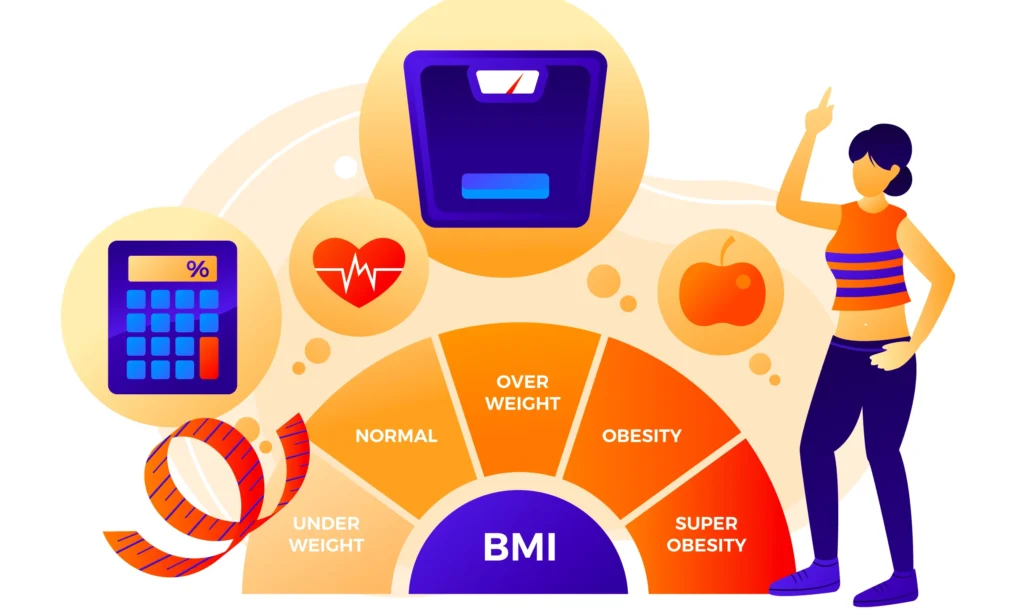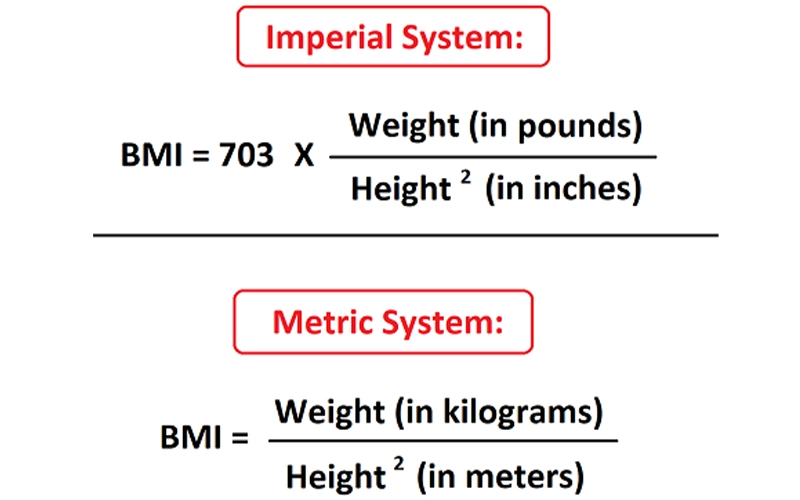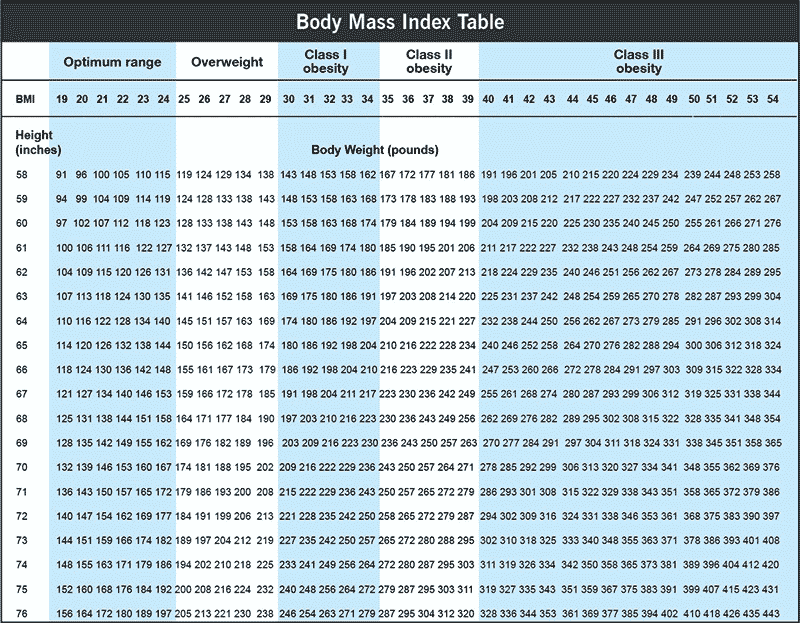How to Measure BMI: 5 Quick & Accurate Methods
To measure BMI, divide your weight in kilograms by your height in meters squared. BMI, or Body Mass Index, is a measure of body fat based on height and weight.
It is a reliable indicator of body fatness for most people and is used as a screening tool to identify possible weight problems for adults. Knowing your BMI can help you understand your overall health and set realistic weight goals.
BMI (Body Mass Index): What Does It Tell You?
BMI, or Body Mass Index, is a measure that helps in assessing an individual’s body fat based on their weight and height. Understanding BMI can provide valuable insights into a person’s overall health and risk of developing certain conditions.
Tools You Need To Measure BMI
To accurately measure BMI, essential tools include a scale, measuring tape, and BMI calculator. By using these tools correctly, you can calculate your BMI by dividing your weight in kilograms by your height in meters squared. Tracking your BMI helps monitor your overall health and fitness levels effectively.
Essential Equipment
To measure your BMI accurately, you will need the following essential equipment:
- A reliable weighing scale: Choose a scale that provides accurate weight measurements. Make sure it is calibrated properly to ensure precise readings.
- A measuring tape: This will help you measure your height accurately. Look for a flexible, non-stretchable tape for precise measurements.
Digital Aids And Apps
Technology has made measuring BMI more convenient than ever. There are various digital aids and mobile applications available that can help you calculate your BMI effortlessly. Here are some popular options:
- BMI Calculators: These online tools allow you to input your weight and height to obtain your BMI instantly. They provide a quick and easy way to measure your BMI without the need for manual calculations.
- Health and Fitness Apps: Many health and fitness apps offer BMI tracking features. These apps not only calculate your BMI but also provide additional features like tracking your progress over time and offering personalized health recommendations.
Step-by-step Guide on How To Measure BMI (Body Mass Index)

Calculating Your Height
Use a wall-mounted tape measure for precise height calculation.
- Stand straight with back against the wall.
- Mark the highest point on your head and measure to the floor.
Measuring Your Weight
For accurate weight measurement:
- Weigh yourself on a flat, stable surface.
- Stand still and record the weight without clothing.
Body Mass Index (BMI) Calculation Formulas

Calculating your Body Mass Index (BMI) is a straightforward process. By using different formulas, you can calculate your BMI accurately. We are going to learn five methods to calculate BMI:
- Standard Method (Metric)
- Imperial Method
- BMI for Children and Teens
- BMI Z-Score
- Adjusted BMI for Older Adults
1. Standard Method (Metric)
The Metric Method is widely used around the world and easy to measure.
- Formula: BMI = Weight (kg) / Height (m²)
- Explanation: This method calculates BMI by dividing a person’s weight in kilograms by their height in meters squared. It’s the most commonly used method and is straightforward for those familiar with the metric system.
- Example: A person weighs 70 kg and is 1.75 meters tall.
- Calculation: BMI = 70 / (1.75²) = 70 / 3.0625 = 22.86
2. The Imperial Method
- Formula: BMI = (Weight in pounds / Height in inches²) x 703
- Explanation: This formula is similar to the metric method but is adapted for the imperial system. After dividing the weight in pounds by the height in inches squared, you multiply by 703 to adjust the units and get the BMI.
- Example: A person weighs 154 pounds and is 68 inches tall.
- Calculation: BMI = (154 / 68²) x 703 = (154 / 4624) x 703 = 0.0333 x 703 = 23.41
3. BMI for Children and Teens
- Method: BMI is calculated using the standard or imperial method and then compared to age- and sex-specific percentiles on a growth chart.
- Explanation: For children and teens, BMI is interpreted differently. It’s compared to other children of the same age and sex to determine whether they are underweight, normal weight, overweight, or obese.
- Example: A 12-year-old boy has a BMI of 21.
- Interpretation: Using a growth chart, you find that this BMI is at the 85th percentile, indicating he is in the overweight category for his age and sex
4. BMI Z-Score
- Method: Z-Score = (BMI – Mean BMI of reference population) / Standard deviation of reference population
- Explanation: The BMI Z-score is a statistical method used primarily for children and adolescents. It compares a child’s BMI to a reference population, showing how many standard deviations their BMI is from the average.
- Example: A child has a BMI of 18. The mean BMI for the reference population is 17, with a standard deviation of 2.
5. Adjusted BMI for Older Adults
- Method: Adjust the interpretation of standard BMI based on factors like muscle mass and body fat distribution, which change with age.
- Explanation: As people age, their body composition changes, so BMI might not be as accurate. Adjusted BMI takes these changes into account, offering a more accurate assessment of health for older adults.
- Example: An older adult has a BMI of 25, but due to decreased muscle mass, a healthcare provider may interpret this differently, considering it closer to a healthy weight.
Common Mistakes To Avoid
Measuring BMI is a simple and effective way to determine if you are at a healthy weight for your height. However, there are some common mistakes people make when measuring their BMI that can lead to inaccurate results. In this article, we’ll go over some of the most common mistakes to avoid when measuring your BMI.
Errors In Measuring
One of the most common mistakes people make when measuring their BMI is using the wrong measurements. BMI is calculated using your height and weight, so it’s important to make sure you have accurate measurements of both. Here are some common errors to avoid:
- Using estimated measurements instead of actual measurements
- Measuring height without shoes
- Measuring weight with heavy clothing or shoes on
- Using the wrong units of measurement (e.g. using feet instead of inches)
By avoiding these errors, you can ensure that you have accurate measurements to calculate your BMI.
Misinterpreting Results
Another common mistake people make is misinterpreting the results of their BMI calculation. BMI is a useful tool, but it’s important to remember that it is just one measure of your overall health. Here are some common mistakes to avoid when interpreting your BMI:
- Thinking that a high BMI means you are overweight or unhealthy
- Thinking that a low BMI means you are underweight or healthy
- Not taking into account other factors that can affect your health, such as muscle mass and body composition
It’s important to remember that BMI is just one factor to consider when assessing your overall health. If you have concerns about your weight or health, it’s always a good idea to talk to your doctor or a qualified healthcare professional.
Adjusting BMI For Different Populations
To measure BMI for different populations, it is essential to consider variations in body composition. Adjusting BMI calculations for factors such as age, ethnicity, and sex allows for a more accurate assessment of an individual’s health status. This ensures that BMI measurements are tailored to the specific characteristics of diverse populations, providing a comprehensive evaluation of body mass.
Adjusting BMI for Different Populations
Age and Gender Considerations
When assessing BMI in different populations, it’s crucial to consider age and gender variations. For example, the BMI range for a healthy weight may differ for men and women. Additionally, as individuals age, their body composition changes, which can impact BMI measurements.
Athletes and Muscle Density
Athletes and individuals with higher muscle density may have a higher BMI due to increased muscle mass. This is important to consider as muscle weighs more than fat. Therefore, relying solely on BMI may not accurately reflect the health status of individuals with a higher muscle mass.
In conclusion, adjusting BMI for different populations requires careful consideration of age, gender, and muscle density. By accounting for these factors, a more accurate assessment of an individual’s health status can be achieved.
Beyond BMI: Other Health Indicators
While BMI is a useful tool, it’s essential to consider other health indicators for a comprehensive view of your well-being.
Waist-to-hip Ratio
The waist-to-hip ratio calculates fat distribution, which can be a more accurate predictor of health risks.
Body Fat Percentage
Body fat percentage indicates the proportion of fat to lean mass in your body, influencing overall health.
Tracking Your BMI Over Time
Tracking your BMI over time is essential in monitoring your health. To measure BMI, divide your weight in kilograms by your height in meters squared. Regularly tracking your BMI can help you make informed decisions about your diet and exercise routine.
Setting Realistic Goals
- Start by setting achievable goals for your BMI.
- Consult with a healthcare professional for guidance.
- Make gradual changes to your diet and exercise routine.
Using BMI To Monitor Health
- Regularly calculate and track your BMI.
- Use the BMI chart for reference.
Expert Tips
Regular exercise and a balanced diet are key to maintaining a healthy BMI.
Consult a healthcare professional for personalized BMI interpretation.

Credit: my.clevelandclinic.org
Frequently Asked Questions
What Is The Correct Way To Measure BMI?
To measure BMI accurately, divide weight in kilograms by height in meters squared. Use the formula: weight (kg) / height (m^2).
What Is The Correct BMI For My Age?
The correct BMI for your age varies depending on several factors. It is best to consult with a healthcare professional who can assess your individual needs and provide personalized guidance. They will consider factors such as your height, weight, and overall health to determine the appropriate BMI range for you.
What Is An Example Of A BMI Calculation?
An example of a BMI calculation is weight in kilograms divided by height in meters squared. For instance, a person weighing 70kg and 1. 75m tall would have a BMI of 22. 86.
What Is A Normal BMI?
A normal BMI is typically considered to be between 18. 5 and 24. 9. This range indicates a healthy weight for your height.
Conclusion
Measuring BMI is a simple yet essential tool for assessing one’s overall health and body composition. By understanding your BMI, you can gain insights into potential health risks and make informed decisions about your lifestyle and fitness goals. Remember to consult with a healthcare professional to fully interpret your BMI results and develop a personalized plan for maintaining a healthy weight.







